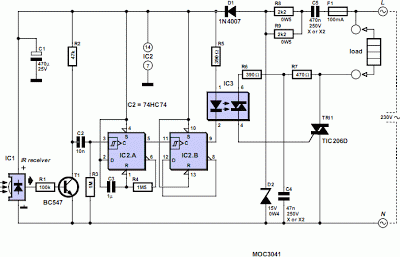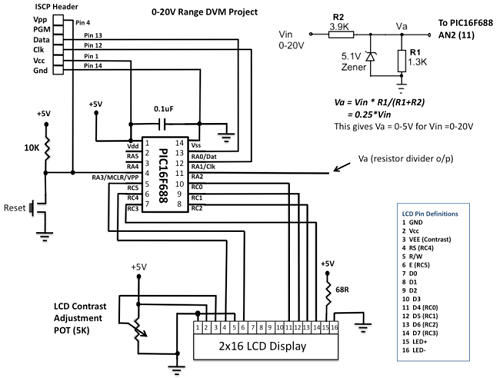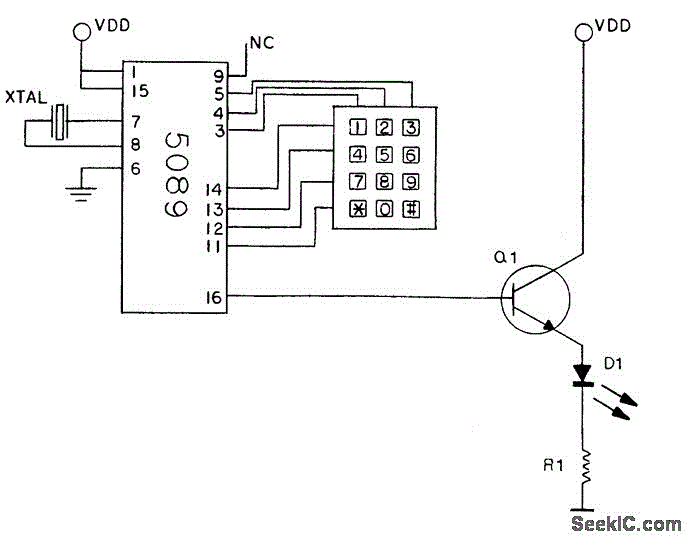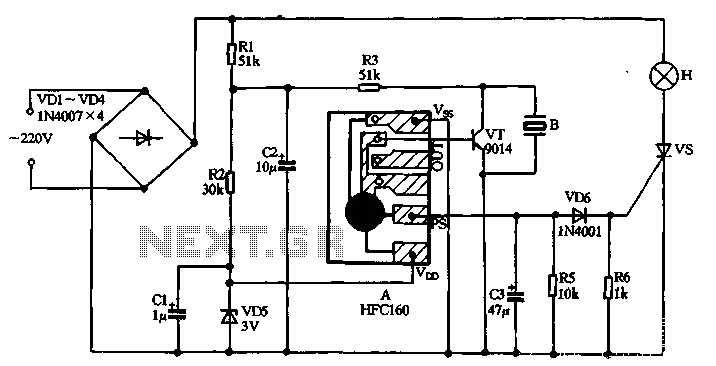
On-off Infrared Remote Control

Most homes today have several infrared remote controls, such as those for televisions, video recorders, and stereos. However, many individuals have experienced frustration when lights remain illuminated after settling into a comfortable chair to watch a movie. This project aims to address that issue with a unique application. It serves as a universal on/off switch for infrared remote controls, distinguishing itself from commercial products by being compatible with any remote control. Consequently, the first remote control available can be used to turn off the light, enhancing the movie-watching experience. The infrared receiver component utilizes an integrated receiver (Sony SBX 1620-52), which is more cost-effective than assembling the same functionality with discrete components. The pulses from this receiver, after being inverted by transistor T1, trigger IC2a, a D flip-flop configured in monostable mode through feedback from its output Q to its reset input via resistor R4 and capacitor C3. The pulse generated at the output Q of IC2A causes IC2B to change state, thereby controlling the LED within IC3. This circuit employs an opto triac with zero-crossing detection, enabling silent switching. It activates triac T2, which is connected to the load being controlled. The selected triac model can handle up to 3 amperes, although a more robust triac may be used if necessary. To minimize size and cost, the circuit is powered directly from the mains via capacitor C5, which must be a class X or X2 model rated for 230 volts AC. This self-healing capacitor is the only suitable choice for power supplies connected to ground, as traditional capacitors rated at 400 volts do not provide adequate safety. Given that the setup connects directly to the mains, it must be housed in a fully insulated enclosure. A power outlet model can effectively serve as an intermediary between the grounded wall outlet and the remote control device. This design is responsive to any infrared signal, making it universally compatible with all remote controls. However, it may inadvertently respond to normal usage of other remotes, which could be undesirable. To mitigate this, it is recommended to obscure the infrared receiver window as much as possible, ensuring that the remote control must be pointed directly at it to activate the circuit.
The circuit design incorporates several key components that facilitate its operation. The Sony SBX 1620-52 infrared receiver is sensitive to a wide range of infrared signals, ensuring compatibility with various remote controls. The use of T1 as an inverter allows the received pulses to be conditioned appropriately for triggering the D flip-flop, IC2A. The monostable configuration of IC2A ensures that a single pulse is produced for each activation, providing a clean and controlled output.
The output from IC2A is fed into IC2B, which acts as a toggle mechanism for the LED indicator within IC3. This LED serves as a visual confirmation of the circuit's state, indicating whether the load is on or off. The opto triac configuration in IC3 is crucial for achieving silent operation, as it allows for the switching of AC loads without generating electrical noise, which can be disruptive in a home theater environment.
The choice of triac T2 is significant, as it must be capable of handling the load's current without overheating or failing. The flexibility to select a more powerful triac provides scalability for different applications, whether for lighting or other household devices.
Powering the circuit directly from the mains via a class X or X2 capacitor ensures safety and efficiency. These capacitors are designed to withstand high voltages and provide self-healing properties, reducing the risk of failure over time. The requirement for proper insulation in housing the circuit cannot be overstated, as safety is paramount when dealing with mains voltage.
Overall, this circuit represents an innovative solution for managing lighting in environments where infrared remote controls are prevalent, enhancing the user experience while ensuring safety and reliability.Most homes today have at least a few infrared remote controls, whether they be for the television, the video recorder, the stereo, etc. Despite that fact, who among us has not cursed the light that remained lit after we just sat down in a comfortable chair to watch a good film This project proposes to solve that problem thanks to its original app
roach. In fact, it is for a common on/off switch for infrared remote controls, but what differentiates it from the commercial products is the fact that it is capable of working with any remote control. Therefore, the first one you find allows you to turn off the light and enjoy your movie in the best possible conditions.
The infrared receiver part of our project is entrusted to an integrated receiver (Sony SBX 1620-52) which has the advantage of costing less than the components required to make the same function. After being inverted by T1, the pulses delivered by this receiver trigger IC2a, which is nothing other than a D flip-flop configured in monostable mode by feeding back its output Q on its reset input via R4 and C3.
The pulse that is produced on the output Q of IC. 2A makes IC. 2B change state, which has the effect of turning on or turning off the LED contained in IC3. This circuit is an opto triac with zero-crossing detection which allows our setup to accomplish switching without noise. It actually triggers the triac T2 in the anode where the load to be controlled is found. The selected model allows us to switch up to 3 amperes but nothing should stop you from using a more powerful triac if this model turns out to be insufficient for your use.
In order to reduce its size and total cost, the circuit is powered directly from the mains using capacitor C5 which must be a class X or X2 model rated at 230 volts AC. This type of capacitor, called self-healing`, is the only type we should use today for power supplies that are connected to ground.
Traditional` capacitors, rated at 400 volts, do not really have sufficient safety guarantees in this area. Considering the fact that the setup is connected directly to the mains, it must be mounted in a completely insulated housing.
A power outlet model works very well and can easily be used to inter-space between the grounded wall outlet and that of the remote control device. Based on this principle, this setup reacts to any infrared signal and, as we said before, this makes it compatible with any remote control.
On the other hand, it has a small disadvantage which is that sometimes it might react to the normal` utilization of one of these, which could be undesirable. To avoid that, we advise you to mask the infrared receiver window as much as possible so that it is necessary to point the remote control in its direction in order to activate it.
🔗 External reference
The circuit design incorporates several key components that facilitate its operation. The Sony SBX 1620-52 infrared receiver is sensitive to a wide range of infrared signals, ensuring compatibility with various remote controls. The use of T1 as an inverter allows the received pulses to be conditioned appropriately for triggering the D flip-flop, IC2A. The monostable configuration of IC2A ensures that a single pulse is produced for each activation, providing a clean and controlled output.
The output from IC2A is fed into IC2B, which acts as a toggle mechanism for the LED indicator within IC3. This LED serves as a visual confirmation of the circuit's state, indicating whether the load is on or off. The opto triac configuration in IC3 is crucial for achieving silent operation, as it allows for the switching of AC loads without generating electrical noise, which can be disruptive in a home theater environment.
The choice of triac T2 is significant, as it must be capable of handling the load's current without overheating or failing. The flexibility to select a more powerful triac provides scalability for different applications, whether for lighting or other household devices.
Powering the circuit directly from the mains via a class X or X2 capacitor ensures safety and efficiency. These capacitors are designed to withstand high voltages and provide self-healing properties, reducing the risk of failure over time. The requirement for proper insulation in housing the circuit cannot be overstated, as safety is paramount when dealing with mains voltage.
Overall, this circuit represents an innovative solution for managing lighting in environments where infrared remote controls are prevalent, enhancing the user experience while ensuring safety and reliability.Most homes today have at least a few infrared remote controls, whether they be for the television, the video recorder, the stereo, etc. Despite that fact, who among us has not cursed the light that remained lit after we just sat down in a comfortable chair to watch a good film This project proposes to solve that problem thanks to its original app
roach. In fact, it is for a common on/off switch for infrared remote controls, but what differentiates it from the commercial products is the fact that it is capable of working with any remote control. Therefore, the first one you find allows you to turn off the light and enjoy your movie in the best possible conditions.
The infrared receiver part of our project is entrusted to an integrated receiver (Sony SBX 1620-52) which has the advantage of costing less than the components required to make the same function. After being inverted by T1, the pulses delivered by this receiver trigger IC2a, which is nothing other than a D flip-flop configured in monostable mode by feeding back its output Q on its reset input via R4 and C3.
The pulse that is produced on the output Q of IC. 2A makes IC. 2B change state, which has the effect of turning on or turning off the LED contained in IC3. This circuit is an opto triac with zero-crossing detection which allows our setup to accomplish switching without noise. It actually triggers the triac T2 in the anode where the load to be controlled is found. The selected model allows us to switch up to 3 amperes but nothing should stop you from using a more powerful triac if this model turns out to be insufficient for your use.
In order to reduce its size and total cost, the circuit is powered directly from the mains using capacitor C5 which must be a class X or X2 model rated at 230 volts AC. This type of capacitor, called self-healing`, is the only type we should use today for power supplies that are connected to ground.
Traditional` capacitors, rated at 400 volts, do not really have sufficient safety guarantees in this area. Considering the fact that the setup is connected directly to the mains, it must be mounted in a completely insulated housing.
A power outlet model works very well and can easily be used to inter-space between the grounded wall outlet and that of the remote control device. Based on this principle, this setup reacts to any infrared signal and, as we said before, this makes it compatible with any remote control.
On the other hand, it has a small disadvantage which is that sometimes it might react to the normal` utilization of one of these, which could be undesirable. To avoid that, we advise you to mask the infrared receiver window as much as possible so that it is necessary to point the remote control in its direction in order to activate it.
🔗 External reference





